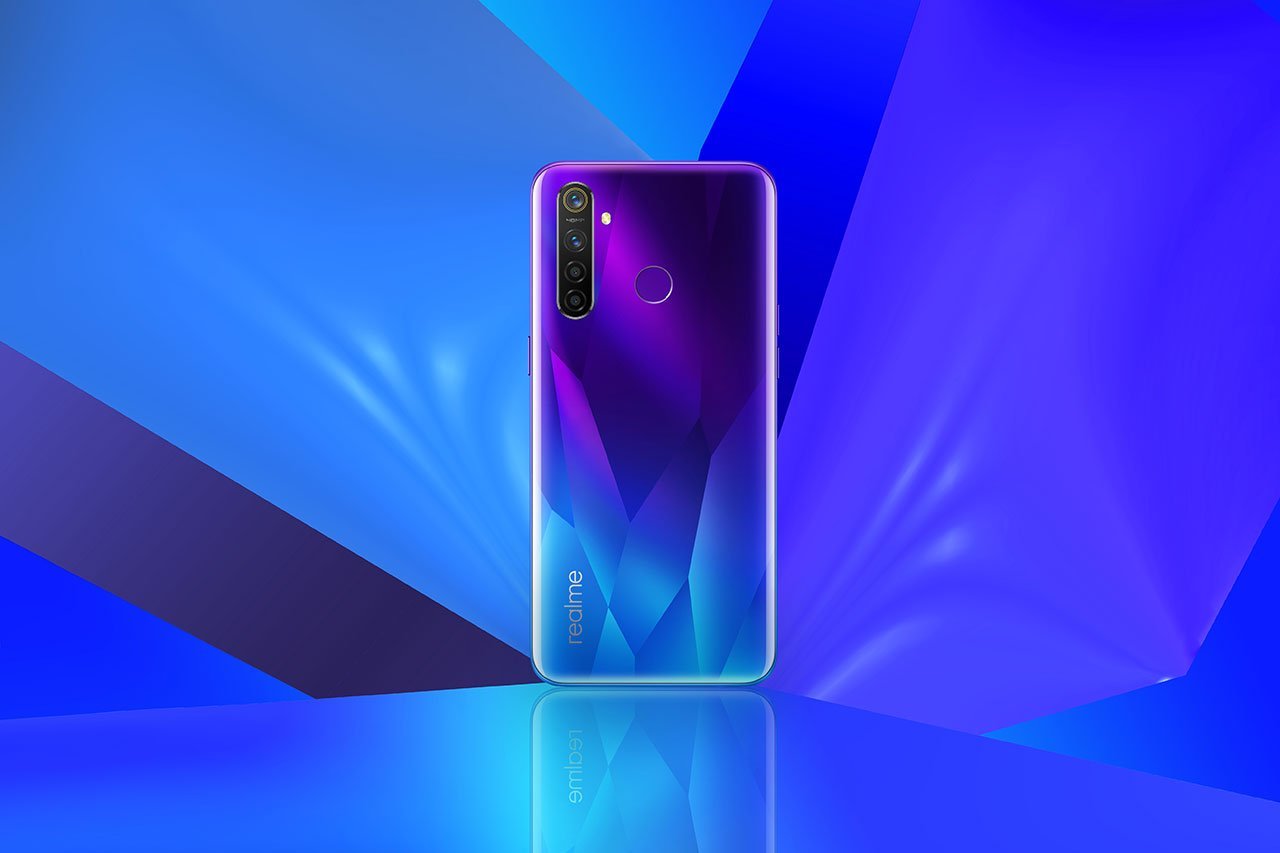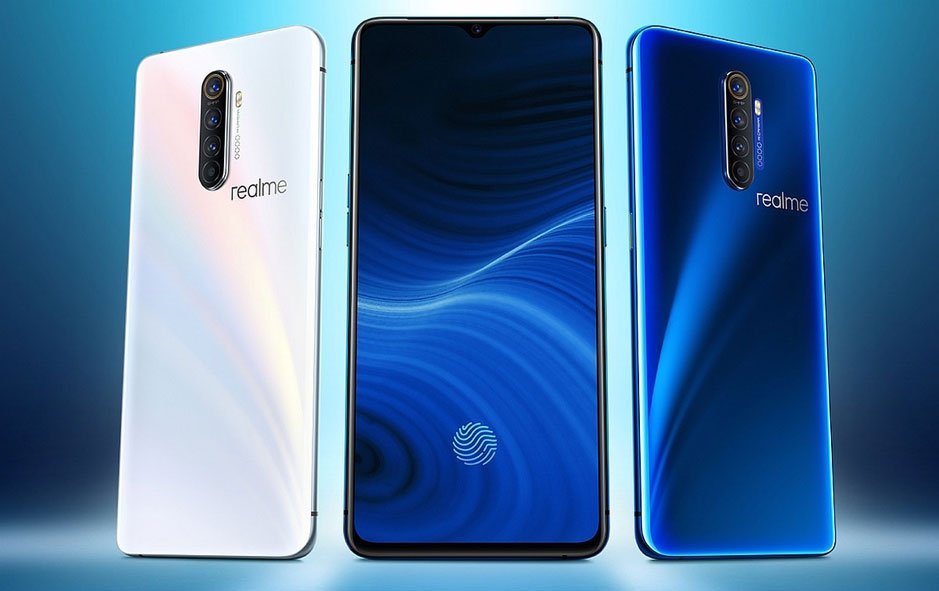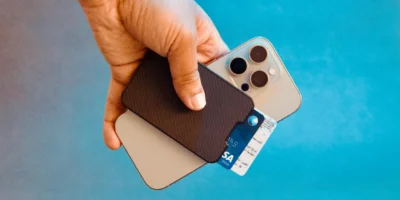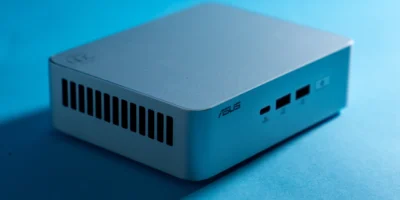OPPO’s spin-off brand, Realme, has been reshaping consumers’ perceptions with its aggressive pricing and performance phones in Asian markets.
On January 13 this year, Realme hosted an event in Dubai to launch the Realme 5 Pro. The smartphone can be seen as a worthy upgrade to the Realme 3 Pro, bringing in significant updates without pushing the price tag by a lot.
The most notable upgrade comes with the camera, as the Realme 5 Pro is the first of many devices to sport a quad-camera setup and will be a trend in followed by most Realme devices going forward. Secondly, the processor gets a slight boost with the Snapdragon 712 instead of the 710. Lastly, the back panel gets a facelift with a new design.
| DIMENSIONS: | 157 x 74.2 x 8.9 mm |
|---|---|
| WEIGHT: | 184 g |
| BATTERY SIZE: | 4035 mAh |
| SCREEN SIZE: | 6.3 in |
| DISPLAY TECHNOLOGY: | LCD |
| SCREEN: | 2340 x 1080 pixels (409 ppi) |
| FRONT CAMERA: | 16 megapixels |
| REAR CAMERA: | 48 megapixels |
| ANDROID VERSION: | 9 – Pie |
| USER INTERFACE: | ColorOS |
| RAM: | 8 GB |
| INTERNAL STORAGE: | 128 GB |
| REMOVABLE STORAGE: | MicroSD |
| CHIPSET: | Qualcomm Snapdragon 712 |
| NUMBER OF CORES: | 8 |
| MAX. CLOCK SPEED: | 2.3 GHz |
| CONNECTIVITY: | LTE, Dual-SIM |
Apart from its specifications, the Realme 5 Pro comes with a more premium back design and the quad-camera setup is clearly an attention grabber. While both versions of the Realme 5 series devices get quad cameras on the back, the Realme 5 Pro is equipped with a 48MP primary camera.
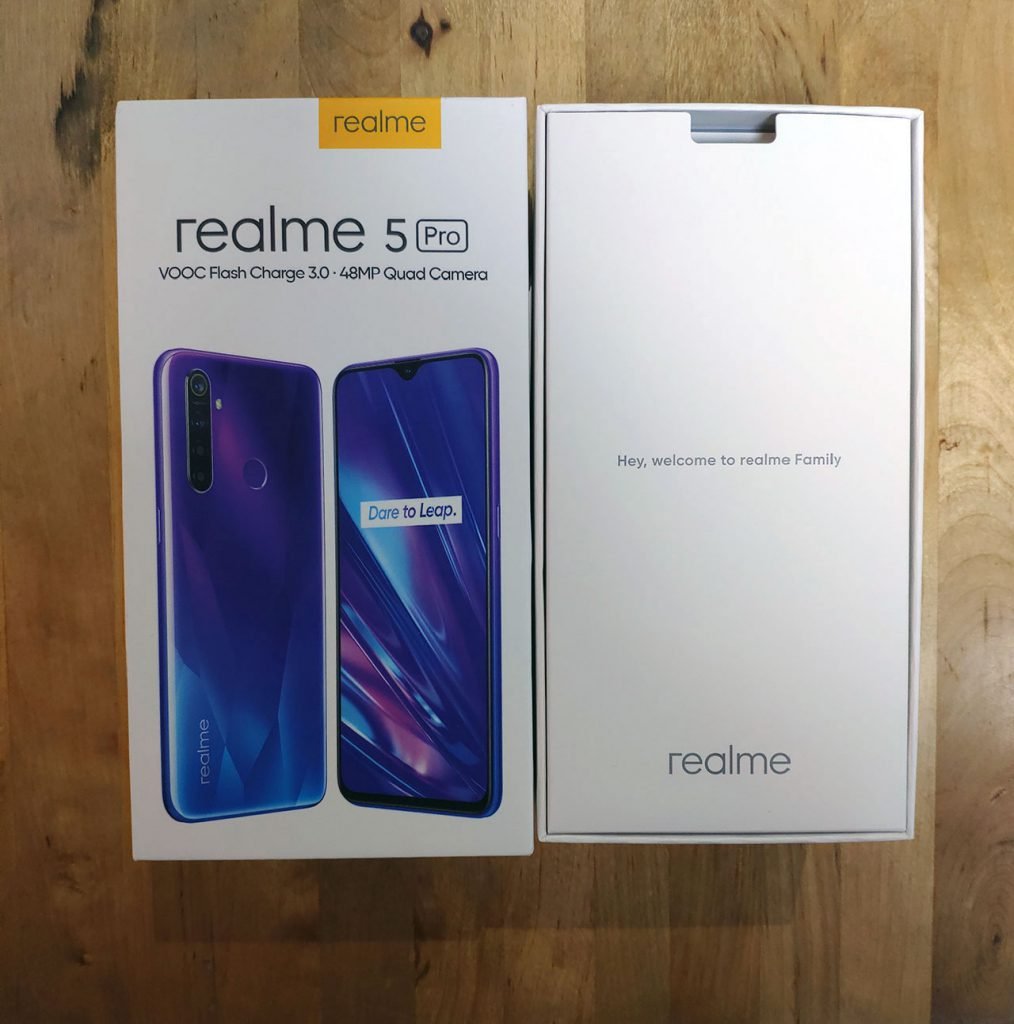
We have the 8GB RAM variant of Realme 5 Pro which has been loaned to us by Realme for this review. We’ll be covering everything that’s new on Realme’s new budget smartphone in this article.
Design & Build
The first thing you’ll notice about the Realme 5 Pro is the revamped design. It has a plastic body, and it looks sharp with a glossy back and a cool geometric pattern.

On the front is a 6.3-inch screen with a waterdrop notch that houses the selfie camera and speakerphone. At the back, we find some Realme branding, the protruding quad rear camera module, and a fingerprint scanner which seems to be at a fairly approachable position.
While on top you’ll find a noise-canceling microphone, the bottom part contains the USB Type-C port, the headphone jack, the primary microphone, and loudspeaker grille. This speaker has been optimized with Dirac’s Power Sound technology for a louder and crisper output from the small mono speaker.
On the left are the volume controls and dual-SIM tray for two nano-SIM cards plus a dedicated microSD card slot that’s expandable up to 256GB — which is great. Meanwhile, the right side of the smartphone houses the power button. All the buttons are tactile, clicky, and are in the right position, so it’s easy to reach.
The build is both fun-looking and solid, especially as Realme explicitly claims it to be splash resistant, although there’s no official IP rating. It doesn’t particularly look or feel premium, but it has a more fun vibe which suits a younger crowd, which is supposedly Realme’s target market after all.
The smartphone is not only heavier but also relatively thicker than the Realme 3 Pro and this is perhaps to accommodate the sensors required for the quad-camera setup, which readily grabs your attention.
Display
The Realme 5 Pro shares the same with a waterdrop notch as the 3 Pro. It’s a 6.3-inch IPS screen with a resolution of 2340 x 1080 and a pixel density of 409ppi. It also has Gorilla Glass 3+ protection underneath a pre-installed plastic screen protector which is always nice to have. Realme states that this “minidrop” notch is smaller than the previous generation, and by the looks of it, it definitely seems small.

The notch houses a 16MP camera for selfies with an earpiece above it. From the front, the Realme 5 Pro looks identical to the 3 Pro and has the same screen-to-body ratio of ~91%. The display is fairly legible in outdoor conditions but the readability might take a hit under direct sunlight. Similarly, the minimum brightness was also pretty good for use in dark scenarios. As a measure to protect your eyes at night, you can choose between Night Shield (which includes a blue light filter), a black and white mode, and a high-contrast mode with a color-inverted black and white mode.
In terms of the quality of the display, the default settings on the Realme 5 Pro render vibrant colors and good contrast. Meanwhile, the pixel density of 409ppi allows the Realme 5 Pro’s display to deliver a fair amount of details.
The panel itself is pretty color accurate but lacks the oomph inherently present on OLED displays. But considering the price of the Realme 5 Pro, that is a reasonable trade-off. Unless you compare it to an AMOLED panel, the colors and contrast won’t disappoint.
Audio
As for audio, sound from the single downward-firing speaker is similar to what you’ll expect from a typical mid-ranger. It can get loud but still lacks some bass and depth. It also has a Dirac Sensaround feature in the settings for when you’re plugging in headphones for a slightly more Hi-Fi sound.
Camera First Impressions
One of the most compelling improvements on the Realme 5 Pro is its camera. For the cameras, the Realme 5 Pro has four rear shooters stacked vertically. This includes a 48MP Sony IMX586 as the primary sensor on the back – the same as the Realme X. This sensor is hooked with an f/1.7 lens and is externally distinguishable because of the yellow rings used to highlight it. The auxiliary cameras include an 8MP wide-angle sensor with an f/2.25 aperture lens that allows a 119º wide field of view, a 2MP macro-lens with a fixed focus at 4cm from the f/2.4 lens, and lastly a 2MP depth sensor which is also paired with an f/2.4 aperture lens.
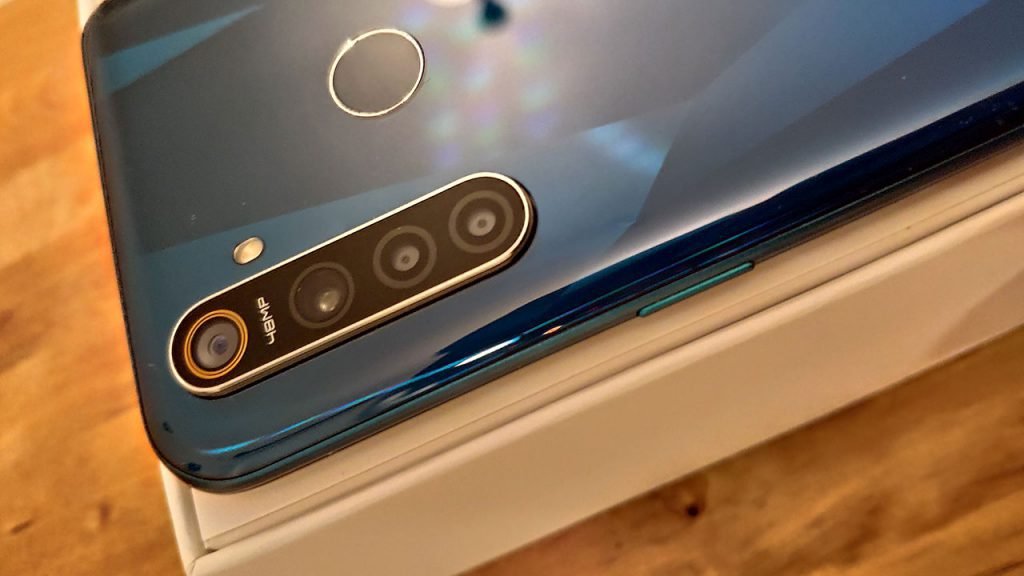
The 48MP Sony sensor supports 4-in-1 pixel-binning and outputs brighter and more saturated 12MP shots while the high f/1.7 aperture value ensures that objects in low-light scenarios get a fair amount of visibility. Meanwhile, the depth sensor has a lower resolution than it did on the Realme 3 Pro and the Realme X, leading us to question the practical usefulness of a depth sensor.
On the front, the Realme 5 Pro is using the same 16MP sensor as the Realme X and it is paired with an f/2.0 aperture lens. This setup supports 2-in-1 pixel binning, resulting in 8MP images, but only while using the Portrait mode.
The Camera options exclusive to the Realme 5 Pro include the wide-angle mode, which is located between the HDR and Chroma Boost toggles on the top menu bar, and the 48MP as well as Macro modes which are hidden away in the menu. Additionally, the smartphone supports standard Realme camera modes such as Nightscape, Pano (panorama), and Expert (Pro mode). It also supports video features such as Slo-mo at 120fps, 240fps, and 960fps along with a Time-lapse mode.
The camera app itself is easy to navigate. It’s packed with a lot of features, and as for quality, it doesn’t disappoint. Photos taken from the primary camera under good lighting looks superb with accurate colors and fine details. We noticed that it leans more towards warmer tones, but you can turn off the AI scene detection if you’re not a fan of the look and want something more natural. Ultrawide camera shots, on the other hand, are okay but susceptible to noise which is more evident in low-light.
Camera – Primary
The 48MP Sony sensor has proven to be a worthy choice by many smartphone brands with devices using this sensor across various price ranges. This range begins with the likes of the Realme 5 Pro and the Redmi Note 7 Pro, ropes in popular entry-level flagships such as the Redmi K20 Pro, OPPO Reno 10X, and the ASUS ZenFone 6 (ASUS 6Z), and extends all the way up to the OnePlus 7 Pro. The primary camera also has EIS (Electronic Image Stabilization) for lesser shaky shots.
The images taken in the Photo mode stand out as spectacular if we take the Realme 5 Pro’s price into consideration. These 12MP shots appear to have better color saturation and more warmth than the 48MP images, thanks to pixel binning. The 12MP images also tend to be brighter than 48MP ones and this allows for a richer dynamic range and color profile. Furthermore, to boost the colors, Realme’s Chroma Boost mode is highly effective for improving the color vibrancy.
The primary camera was generally really snappy with no discernable shutter lag while shooting in 12MP mode. The dynamic range was usually pretty high with occasionally blown-out highlights while shooting in low-light conditions.
When using the Ultra 48MP mode, of course, you get crisp details, with reduced noise and more vivid colors. However, there is an observable shutter lag of nearly a second while taking images in the 48MP mode and the resulting images have a file size of nearly 20MB per image. Because of this lag in image processing as well as for the massive file sizes, Realme has omitted HDR support for 48MP shots. The mode, however, does support Chroma Boost.
Camera – Night
While the images in night light aren’t astonishingly bright or pleasant, the Nightscape mode improves the lighting and the colors significantly. Instead of relying on exposing the sensor for a few seconds for brighter images at night, Realme’s Nightscape mode works by stacking multiple frames at different exposure levels. With Nightscape mode on, you’ll see a difference in overall brightness and details. It doesn’t mess up the photo, but you do have to stay steady for 3 seconds to take the shot. We highly recommend turning on Nightscape if you really want good low-light photos.
Camera – Wide-angle
The wide-angle sensor is useful for fitting vast landscapes and large groups within the frame. Its utility, however, may be limited since this sensor has a fixed focus. From an overview, images appear well-composed but zooming into the images easily reveals the inadequate details and poor structure in the images.
The focusing and dynamic range were a notch lower than the primary, but that is expected with the f/2.25 aperture. In low light, the resultant images were significantly darker and called for a much more stables handling.
Camera – Macro
Realme has added a macro sensor into the setup but this 2MP sensor is paired with a fixed-focus lens and the setup is very limiting. The focal length is fixed at 4cm (1.6in) and moving the camera to this exact length from a tiny object becomes a challenging task and will take some getting used to. Moreover, the f/2.4 nature of the lens requires ample light to get usable results. It’s a fun feature to have, but not one I would rely on a lot.
Camera – Portrait
Coming to portrait photography, the Realme 5 Pro does an good job of accurately separating the background from the objects in focus. Just like on the Realme X, the background blurring effect is less aggressive than the Realme 3 Pro. It separates the subject from the background pretty well. It works better with the rear cameras since we get a dedicated depth sensor, but it’s effective with portrait selfies as well.
The 2MP portrait lens is practically just a depth sensor for better portrait mode images. It did its job for the most part, and helped get a clean background separation even in low light.
Camera – Selfies
Lastly, the 16MP selfie camera follows the same trend we’ve seen on previous Realme devices. The colors on the selfies lack the same punchy effect as the rear camera and there’s a fair amount of smoothening and whitening even when the Beauty Mode is turned off. Post-processing software like Snapseed can be used to remedy the dull colors to some extent but the lack of details in the images is something we can’t fix using editing tools. In terms of portrait selfies, edge detection is decent but not as accurate as in the case of the rear camera. Moreover, the background blurring is more aggressive than the portraits taken with the rear camera and there’s no easy way of editing the strength of this blur before or after clicking the images.
There’s no wide-angle option, but the photos come out with accurate colors, especially when it comes to skin tones. You can also take advantage of the beauty mode on board.
Camera – Videos
In terms of video capturing, the Realme 5 Pro can record 4K videos using the rear camera and Full HD videos using the front camera. Even though the Sony sensor supports 4K recording at 60fps, the smartphone’s abilities are limited to 30fps recording due to the performance constraints of the Snapdragon 712 processor. Further, the wide-angle and the macro sensors cannot be used for recording videos. The smartphone is also capable of recording slow-motion videos at up to 960fps, although recordings at 120fps and 240fps are smoother and more convincing in terms of the quality.
Performance
Realme has equipped the 5 Pro with the Snapdragon 712 chipset. This chipset has been fabricated at 10nm, bringing in higher efficiency and raw processing power than any other phone in this price segment. Qualcomm says that the higher clock speed is expected to improve the processing capabilities by 10% while the graphics performance is boosted by 35%. Furthermore, the Realme 5 Pro is now using UFS 2.1 storage technology which increases the storage transfer speeds, thereby improving the overall app launching and data transfer speeds.
Take a look at the synthetic benchmark scores below:
• AnTuTu – 179,025
• Geekbench – 316 (Single-Core), 1,477 (Multi-Core), 947 (OpenCL)
• 3D Mark SSE – 2,089 (OpenGL ES 3.1), 1,982 (Vulkan)
• PC Mark – 8,653 (Work 2.0)
• AndroBench – 489.41 MB/s (Seq. Read), 189.41 MB/s (Seq. Write)
For regular use including social media, multi-tasking, calling and texting, etc., the Realme 5 Pro never broke a sweat. Every action was snappy, just slightly bogged down by not-so-fluid animations. The Snapdragon 712 is paired with up to 8GB of LPDDR4X RAM and UFS 2.1 storage which work in tandem to increase performance and reduce app opening times.
We didn’t experience much lags or frame drops when playing titles like PUBG Mobile, Mobile Legends, and Asphalt 9 at their best graphics settings. The processor always held its own for even heavy 3D games such as PUBG while providing a consistent and stable frame-rate throughout, with minimal heating. We’ve seen this same chipset perform a lot worse in other phones, so Realme must have done some solid optimizing.
OS
The Realme 5 Pro runs ColorOS 6, borrowed from its parent company OPPO. The custom Android skin is based on Android 9 Pie. With the new device, Realme has addressed some of the peeving elements of the ColorOS interface, including the obtrusive quick setting tiles. The quick settings interface on the Realme 5 Pro now has smaller icons, which are now rounder in shape, and these resemble the interface in MIUI 10.
ColorOS seems to be extremely responsive and has all the features I would like without adding too much bloatware. Unlike the X2 Pro, this device does not appear to have a dark mode available yet. It is currently expected that the Realme 5 Pro will be upgraded to ColorOS 7 using Android 10 in the first quarter of 2020. It is claimed that Realme will tweak ColorOS 7 offering nearly Stock Android user interface which could be a huge advantage for the device.
Realme has also added features like an app vault to lock away certain applications as well as added the functionality to limit the bandwidth of the mobile hotspot shared using the smartphone. The company has ensured these features will be rolling out to older devices via software updates.
Connectivity
Connectivity-wise, it has Dual-SIM, 4G LTE, WiFi ac, Bluetooth 5.0, a number of SatNavs, and finally, USB Type-C. Calls are loud and clear and can quickly connect to mobile internet. SatNav also works well as we don’t encounter problems when using location-based apps.
Battery & Charging
The Realme 5 Pro packs in the same 4,045mAh battery as the Realme 3 Pro and this battery easily lasts for more than 24 hours with moderate usage and approximately 5 hours of screen-on time (SOT). When challenged with extensive tasks including power-hungry games, the battery can provide for around 12-15 hours of backup.
In terms of charging, the Realme 5 Pro supports VOOC 3.0 fast charging at 20 Watt. This technology, which works in line with OnePlus’ philosophy of high voltage and low current discharge used in Dash Charge, helps charge the smartphone very quickly without heating it up significantly, taking it from 0 to over 50% in just 30 minutes. Unlike its predecessor, the Realme 3 Pro, charging takes place over USB Type-C.
ColorOS 6 does a great job at Power management. Underneath the Android skin is a very aggressive app killing mechanism that prevents dormant apps from using any system resources or battery power so much so that a Realme smartphone can last for a couple of weeks in standby without any notable usage of the battery. These battery optimizations can be fully disabled for any application of your choice.
Realme 5 Pro: The Verdict
The Realme 5 Pro is a genuine contender for the best budget smartphone, thanks to its consistent performance, above-average battery life and dependable cameras.
For the price, this is an amazing phone offering tremendous value for money. Due to the limited amount of competition at this price point with anywhere near this spec, it is hard or unfair to criticize much about it. The Realme 5 Pro is a delight to look at. The company seems to be investing a fair chunk of its time innovating in terms of the design and this helps make their smartphones visually more distinctive compared to devices by other brands.
The phone takes a major lead in terms of the battery backup and fast charging capabilities. While you have 20W charging at your disposal, the battery optimizations ensure that the Realme 5 Pro can help you make through the day without requiring a charger.
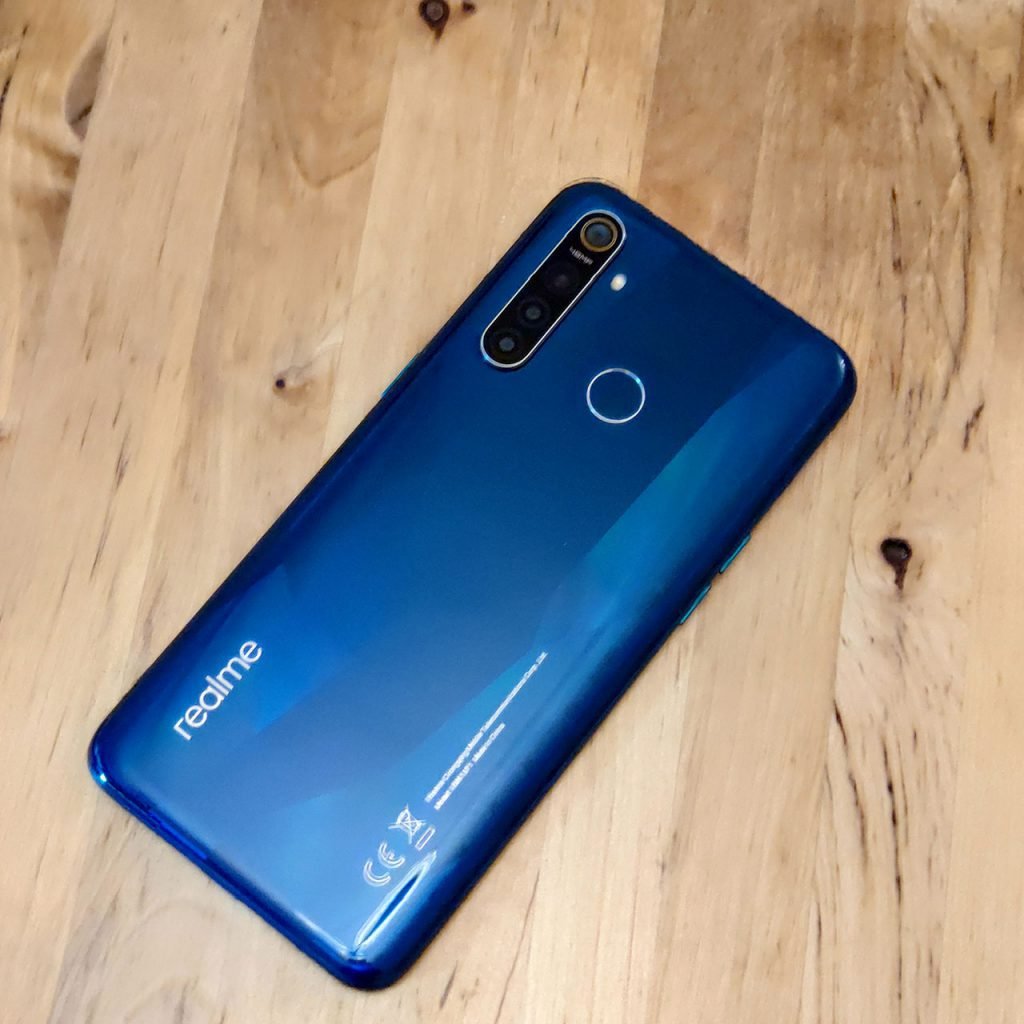
The build could have been a little sturdier and ColorOS can take some getting used to, but if those aren’t your top preferences, the Realme 5 Pro deserves to be on your consideration list.
Those upgrading from the Realme 3 Pro will like the improved cameras, revamped design, larger RAM, faster storage, and USB Type-C. The performance may not have improved that much, but the Realme 5 Pro is still a strong strong candidate for those looking for a capable yet budget-friendly mid-range smartphone.
